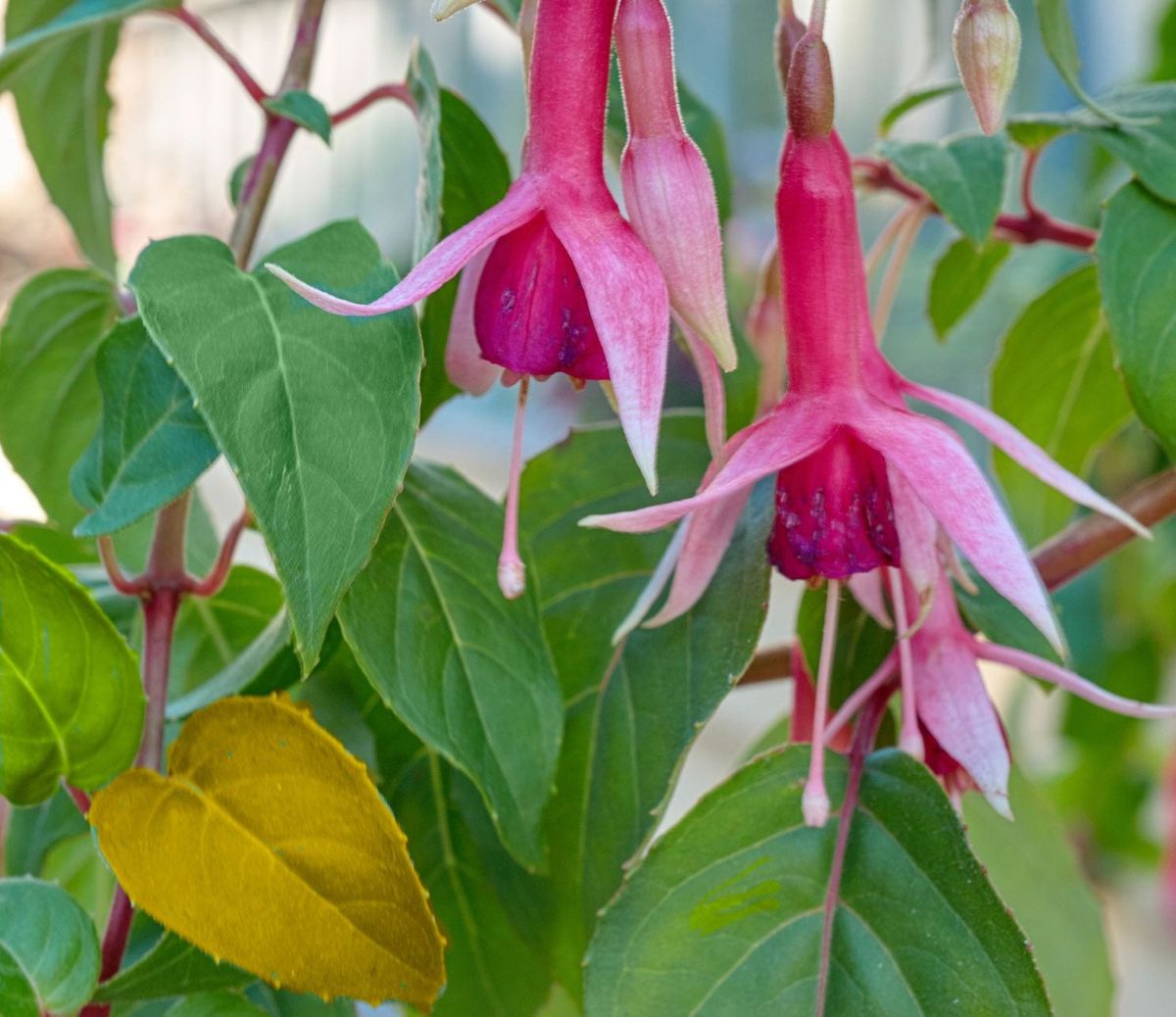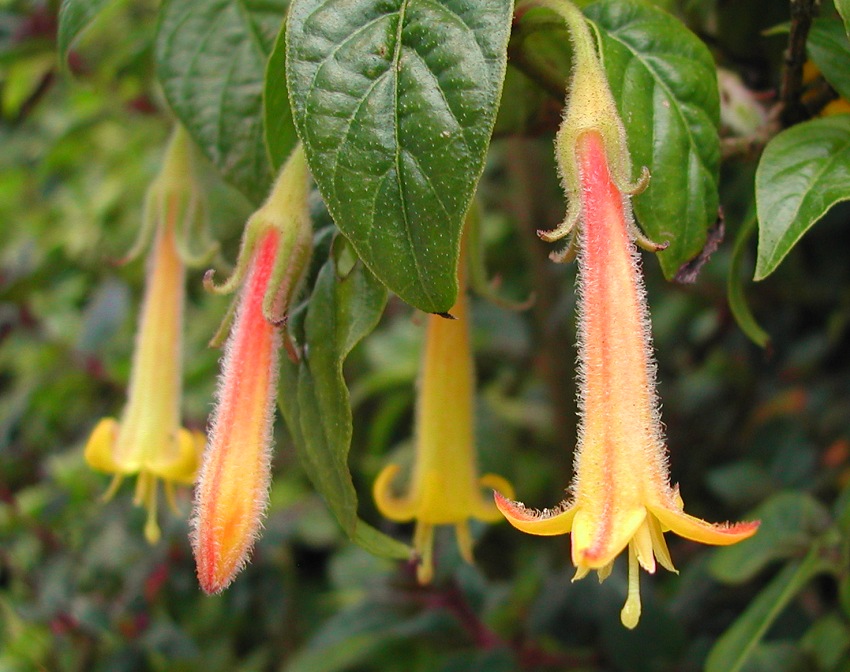Fuchsia yellow leaves can be an eye-catching and beautiful aspect of your garden, adding vibrant colors and interest throughout the seasons. However, when your fuchsia plants display yellow leaves, it may indicate underlying problems that require attention. This blog post will explore the various reasons why your fuchsia leaves may turn yellow, preventive measures, and how to ensure healthy growth of these stunning plants. 🌺
Understanding Fuchsia Plants

Fuchsia plants are known for their delicate, drooping flowers that come in various colors, including pink, purple, and red. They are often grown in hanging baskets or as container plants, making them perfect for patios and porches. However, the health of these plants can be jeopardized by a multitude of factors, leading to yellowing leaves.
Common Varieties of Fuchsia
Before delving into the issues that cause yellow leaves, it’s essential to understand the common varieties of fuchsia. Some popular types include:
| Variety | Characteristics | Flower Color |
|---|---|---|
| Fuchsia magellanica | Hardy perennial, thrives in cooler climates | Purple and pink |
| Fuchsia ‘Lady Thumb’ | Compact growth, excellent for containers | Bright pink |
| Fuchsia ‘Swingtime’ | Vigorous growth, great for hanging baskets | Red and white |
What Causes Fuchsia Yellow Leaves?
When your fuchsia plants start developing yellow leaves, it can be distressing. Let’s explore some common causes:
1. Overwatering
One of the most frequent culprits behind yellow leaves is overwatering. Fuchsia plants prefer consistently moist soil, but soggy conditions can lead to root rot and nutrient deficiencies.
Important Note: Always check the soil moisture before watering your fuchsia plants. If the top inch of soil feels wet, hold off on watering.
2. Nutrient Deficiency
Fuchsias require certain nutrients to thrive. A deficiency in nitrogen or iron can lead to chlorosis, characterized by yellow leaves.
Signs of Nutrient Deficiency
- Yellow leaves with green veins (often indicates iron deficiency)
- Stunted growth
- Pale or faded flowers
3. Pests and Diseases
Pests like aphids, spider mites, and whiteflies can also cause yellowing in leaves. These pests feed on the plant’s sap, leading to weak growth and discoloration.
Diseases to Consider
- Powdery mildew
- Fungal infections
- Root rot
How to Diagnose and Treat Yellow Leaves
Diagnosing the specific issue causing yellow leaves in fuchsia requires careful observation. Here are steps to follow:
1. Examine the Soil
Check for water retention and drainage. If the soil is constantly wet, consider repotting your fuchsia in well-draining soil. Adding perlite or coarse sand can improve drainage.
2. Assess Nutrient Levels
Conduct a soil test to determine nutrient levels. Based on results, you may need to apply a balanced fertilizer or amend the soil to provide necessary nutrients.
3. Check for Pests
Inspect the undersides of leaves for pests. If you spot any, treat your fuchsia with insecticidal soap or neem oil. Regular monitoring can help catch infestations early.
4. Treating Diseases, Fuchsia Yellow Leaves
If your plant shows signs of fungal infection or root rot, remove affected areas and treat the remaining plant with a fungicide. Ensure proper air circulation around your plants to reduce the risk of disease.
Preventive Measures for Healthy Fuchsia Plants
Prevention is always better than cure. Here are some strategies to keep your fuchsia plants thriving and vibrant:
1. Proper Watering Techniques
Water your fuchsias early in the morning and allow excess water to drain. Aim for consistent moisture but avoid soggy conditions.
2. Fertilization Schedule

Feed your fuchsia plants with a balanced fertilizer every 4-6 weeks during the growing season. This will promote healthy growth and vibrant flowers. 🌼
3. Regular Pruning
Pruning helps maintain the shape and encourages new growth. Remove any dead or yellowing leaves to allow the plant to focus its energy on healthy growth.
4. Adequate Light and Temperature
Fuchsias thrive in partial shade to full sun environments, depending on the variety. Ensure your plants receive adequate light while protecting them from extreme temperatures.
5. Pest Management
Keep an eye on your plants for early signs of pests. Implementing integrated pest management (IPM) can help keep pest populations under control.
Common Myths About Fuchsia Plants: Fuchsia Yellow Leaves
As with any plant, there are myths and misconceptions surrounding fuchsias. Here are a few debunked:
Myth 1: Fuchsias Cannot Grow in Direct Sunlight
While most fuchsia varieties prefer partial shade, certain types can thrive in full sun, especially if they receive adequate moisture. 🌞
Myth 2: Yellow Leaves Mean the Plant is Dying
Yellow leaves can indicate various issues, not just death. With the right care and attention, many problems can be resolved, allowing your fuchsia to thrive again.
Myth 3: Fuchsias Are Too Difficult to Grow
While fuchsias do require specific conditions, they are not overly difficult to care for. With the right knowledge and practices, anyone can cultivate healthy fuchsias in their garden!
Fuchsia Plants: A Summary
Fuchsia plants are beautiful additions to any garden, known for their vibrant and delicate flowers. While yellow leaves can signal distress, understanding the underlying causes can help you effectively manage and care for your plants. By following the Artikeld strategies for diagnosis, treatment, and prevention, you can maintain the health of your fuchsias and enjoy their stunning blooms for years to come. 🌷
Incorporating these tips will not only help you maintain the vibrancy of your fuchsia plants but will also enhance the overall beauty of your garden landscape. Remember, a well-cared-for fuchsia can flourish beautifully, enriching your outdoor space and providing joy throughout the seasons.
